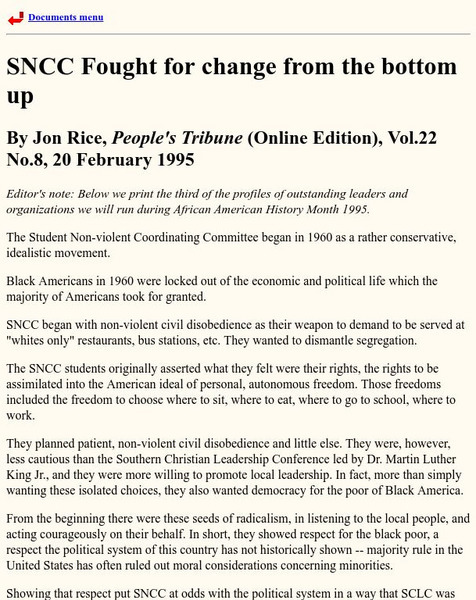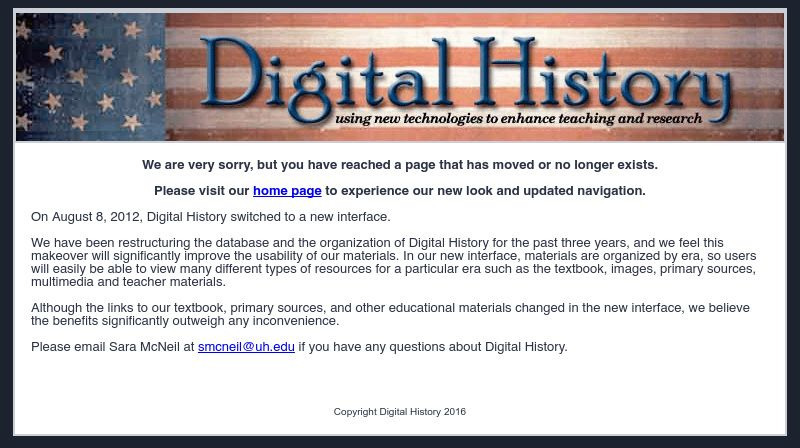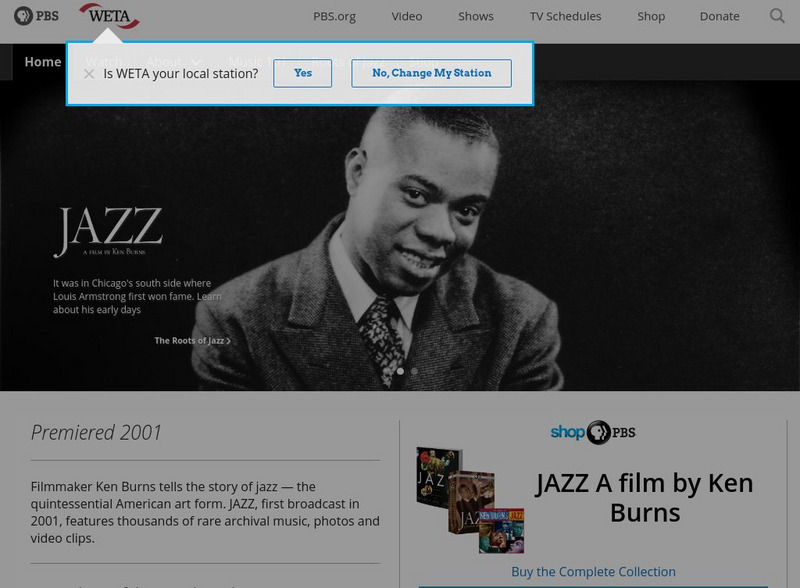Curated OER
Ordinary People, Ordinary Places: The Civil Rights Movement
Students analyze Martin Luther King's message of nonviolent protest discover how individuals adapted his message to their own communities and situations.
Curated OER
A Time for Justice
Middle schoolers explain the protections and privileges of individuals and groups in the United States.
Curated OER
Civil Rights Movement in America
Eleventh graders explore the Civil Rights movement as a culmination of history and cultural perspectives developed from the Slave Trade and Reconstruction. They identify leading persons and organizations and their personal philosophy to...
Curated OER
History Matters: "And We Shall Overcome": Johnson's Special Message to Congress
Read President Lyndon B. Johnson's speech before the the Congress in support of the Voting Rights Act. Feel the passion in his address and his desire to further racial equality.
American Public Media
American Radio Works: The Southern Manifesto
The Southern Manifesto, written in opposition to the racial integration of public places and condemning the Supreme Court's 1954 school desegregation decision, was signed by 101 congressmen from the Deep South.
Hartford Web Publishing
World History Archives: Sncc Fought for Change From the Bottom Up
A highly informative narrative on the development and philosophy of the Student Nonviolent Coordinating Committee, with comparisons to Dr. King's SCLC and the Black Panther Party. Good resource.
Houghton Mifflin Harcourt
Harcourt: Biographies: Martin Luther King, Jr.
This biography of Martin Luther King Jr. includes a timeline and addresses the life of the civil rights leader from childhood to the legacy he left behind.
Library of Congress
Loc: With an Even Hand, Brown vs. Board at Fifty
A special exhibit at the Library of Congress to commemorate the Brown vs. Board of Education 50 year anniversary.
National Endowment for the Humanities
Neh: Edsit Ement: Civil Rights Movement
This lesson on the Civil Rights movement is organized into three sections: "Identifying the Need for Change," "Ordinary People in the Civil Rights Movement," and "Historic Places in the Civil Rights Movement."
Library of Congress
Loc: African American Odyssey: The Civil Rights Era
This two-part feature on African American history offers an in-depth look at the events of the 1960's civil rights movement. Discusses voting rights, laws, military segregation, freedom rides, sit-ins and the NAACP. Includes historic...
National Humanities Center
National Humanities Center: Toolbox Library: Making of African American Identity: Volume Iii, 1917 1968: Protest
A collection of 13 primary resources with questions for discussion and links to supplemental material about the various forms of protest undertaken by African Americans in pursuit of civil rights and how it helped shape identity.
Digital History
Digital History: Black Nationalism and Black Power
There were two methods of protesting discrimination of African Americans during the Civil Rights Movement: follow Martin Luther King, Jr. or Malcolm X. Find out about the Black Panther Party, Black Nationalism, and Black Power.
University of Groningen
American History: Outlines: Desegregation
Overview of efforts to overthrow Plessy v Ferguson and desegregate public schools and other places during the Civil Rights Movement.
National Humanities Center
National Humanities Center: Teacher Serve: Segregation
Steven Lawson, Professor of History at Rutgers, explores how racial segreagation changed from before the Civil War up to the 1950s and the differences in segregation between the North and the South. Students should understand the legacy...
PBS
Pbs Learning Media: Civil Rights Leader, Bayard Rustin
This transcript of an interview for Eyes on the Prize documents the leadership strategies of March on Washington organizer Bayard Rustin.
PBS
Pbs Learning Media: Civil Rights Activist: Vanessa Venable
In this transcript of an interview for Eyes on the Prize, Vanessa Venable describes the impact of school closings in Prince Edward County, Virginia, from 1959-1964.
PBS
Pbs Learning Media: Civil Rights Leader, Rev. C. T. Vivian
In this transcript of an interview for Eyes on the Prize, the Reverend C. T. Vivian remembers his leadership role in the Civil Rights Movement and the risks civil rights activists took in challenging segregation.
University of Missouri
Famous Trials: The Emmett Till Murder Trial
Read the compelling story of the abduction and murder of Emmett Till, and the subsequent sham trial of his murderers. This site has accounts of what precipitated the abduction, testimony from the trial, and the shocking confession of the...
PBS
Pbs Learning Media: Civil Rights Special Collection
Multimedia collection of video, primary text documents and audio on Civil Rights, especially Brown vs. Board of Education.
University of Virginia
Virginia Center for Digital History: Television News of the Civil Rights Era
A rich collection of streaming video samples of television news footage from 1950 to 1970, along with an assortment of primary source documents, first-person accounts, a glossary of terms, and essays and analysis for learning about the...
PBS
Pbs: Jazz Is About Collaboration: Jim Crow Laws: Segregation
Engage your students in discussion about segregation and the Jim Crow laws with this in-depth lesson plan. Using jazz music, you will contrast the ways in which America's most significant contribution to the arts depended on...
PBS
Pbs: Jazz Music and the Crisis Over School Desegregation
Working in cooperative groups, your students will learn how jazz musicians expressed the Civil Rights era in their music. This lesson focuses on the Civil Rights movement in Little Rock, Arkansas. Also, they will learn to about the...
TED Talks
Ted: Ted Ed: Stories: Legacies of Who We Are
Storyteller and educator Awele Makeba combines performing arts and history to tell a powerful story from the American Civil Rights Movement. Free registration is required for full access to the lesson.
Stanford University
Martin Luther King, Jr. And the Global Freedom Struggle
This article takes readers through the events leading to the expansion of the Civil Rights Movement to the north through a major non-violent campaign protesting unfair housing practices in Chicago.






















